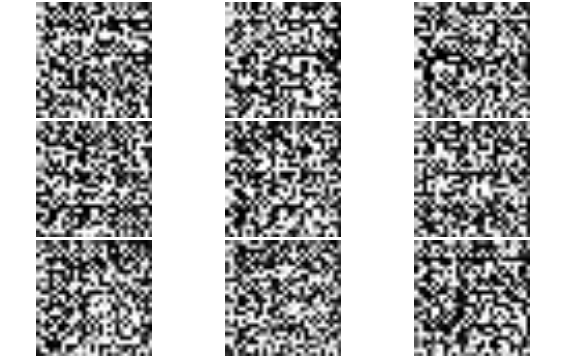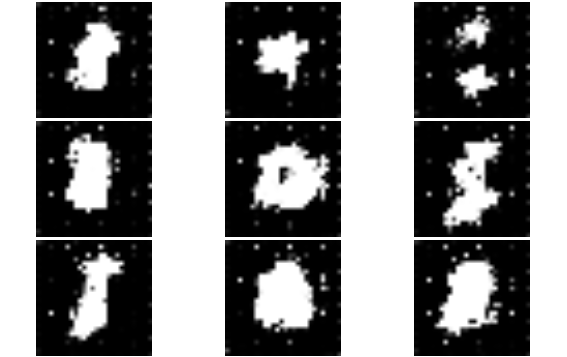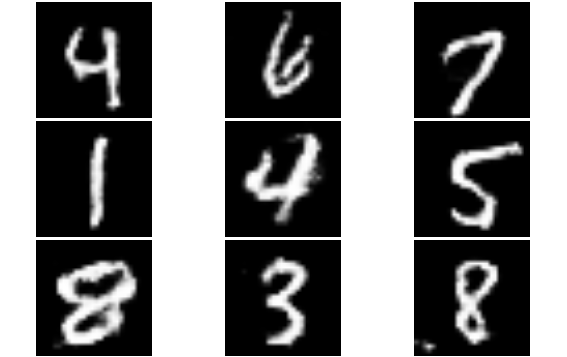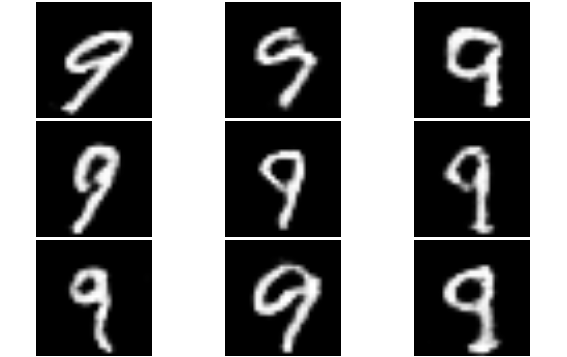This is an automated email from the ASF dual-hosted git repository.
thomasdelteil pushed a commit to branch master
in repository https://gitbox.apache.org/repos/asf/incubator-mxnet.git
The following commit(s) were added to refs/heads/master by this push:
new b396a63 Fix READMEs for examples (#14179)
b396a63 is described below
commit b396a63bf99652bf3ee8c6c9135b73113127fcce
Author: Nathalie Rauschmayr <n.rauschm...@gmail.com>
AuthorDate: Tue Feb 19 13:26:24 2019 -0800
Fix READMEs for examples (#14179)
* fixing examples
* fixing examples and adding READMEs
fixing examples and adding READMEs
fixing examples and adding READMEs
fixing examples and adding READMEs
add missing files
fixed some bugs in readmes
fixed some bugs in readmes
fixed some spelling mistakes
update
update
* removing images and fixing spelling mistakes
* removing images and fixing spelling mistakes
* updating links
* Adding license header
* empty commit
* Add missing license headers
* Adding changes requested by ChaiBapchya
---
example/captcha/mxnet_captcha.R | 4 +-
example/gan/CGAN_mnist_R/README.md | 168 +++++++++++++++++++++++++++
example/gluon/actor_critic/README.md | 61 ++++++++++
example/gluon/audio/README.md | 115 ++++++++++++++++++
example/gluon/house_prices/README.md | 29 +++++
example/gluon/lstm_crf/README.md | 36 ++++++
example/gluon/mnist/README.md | 55 +++++++++
example/gluon/super_resolution/README.md | 45 +++++++
example/gluon/{ => super_resolution}/data.py | 0
example/model-parallel/README.md | 20 ++++
example/sparse/README.md | 24 ++++
11 files changed, 555 insertions(+), 2 deletions(-)
diff --git a/example/captcha/mxnet_captcha.R b/example/captcha/mxnet_captcha.R
index 8988d25..43e819f 100644
--- a/example/captcha/mxnet_captcha.R
+++ b/example/captcha/mxnet_captcha.R
@@ -39,9 +39,9 @@ label <- mx.symbol.Reshape(data = label, target_shape = c(0))
captcha_net <- mx.symbol.SoftmaxOutput(data = fc2, label = label, name =
"softmax")
mx.metric.acc2 <- mx.metric.custom("accuracy", function(label, pred) {
- ypred <- max.col(t(pred)) - 1
+ ypred <- max.col(t(data.matrix(pred))) - 1
ypred <- matrix(ypred, nrow = nrow(label), ncol = ncol(label), byrow =
TRUE)
- return(sum(colSums(label == ypred) == 4) / ncol(label))
+ return(sum(colSums(data.matrix(label) == ypred) == 4) / ncol(label))
})
data.shape <- c(80, 30, 3)
diff --git a/example/gan/CGAN_mnist_R/README.md
b/example/gan/CGAN_mnist_R/README.md
new file mode 100644
index 0000000..bf0bb08
--- /dev/null
+++ b/example/gan/CGAN_mnist_R/README.md
@@ -0,0 +1,168 @@
+<!--- Licensed to the Apache Software Foundation (ASF) under one -->
+<!--- or more contributor license agreements. See the NOTICE file -->
+<!--- distributed with this work for additional information -->
+<!--- regarding copyright ownership. The ASF licenses this file -->
+<!--- to you under the Apache License, Version 2.0 (the -->
+<!--- "License"); you may not use this file except in compliance -->
+<!--- with the License. You may obtain a copy of the License at -->
+
+<!--- http://www.apache.org/licenses/LICENSE-2.0 -->
+
+<!--- Unless required by applicable law or agreed to in writing, -->
+<!--- software distributed under the License is distributed on an -->
+<!--- "AS IS" BASIS, WITHOUT WARRANTIES OR CONDITIONS OF ANY -->
+<!--- KIND, either express or implied. See the License for the -->
+<!--- specific language governing permissions and limitations -->
+<!--- under the License. -->
+
+# Conditional Generative Adversarial Network with MXNet R package
+
+This tutorial shows how to build and train a Conditional Generative
Adversarial Network (CGAN) on MNIST images.
+
+## How GAN works
+A Generative Adversarial Model simultaneously trains two models: a generator
that learns to output fake samples from an unknown distribution and a
discriminator that learns to distinguish fake from real samples.
+
+The CGAN is a conditional variation of the GAN where the generator is
instructed to generate a real sample having specific characteristics rather
than a generic sample from full distribution. Such condition could be the label
associated with an image like in this tutorial or a more detailed tag as shown
in the example below:
+
+![Image credit: (Scott
Reed)[https://github.com/reedscot/icml2016]](https://raw.githubusercontent.com/dmlc/web-data/master/mxnet/example/gan/CGAN_mnist_R/dcgan_network.jpg)
+
+## Initial setup
+
+The following packages are needed to run the tutorial:
+
+```
+require("imager")
+require("dplyr")
+require("readr")
+require("mxnet")
+```
+
+The full demo is comprised of the two following scripts:
+
+```CGAN_mnist_setup.R```: prepare data and define the model structure
+```CGAN_train.R```: execute the training
+
+## Data preperation
+
+The MNIST dataset is available
[here](https://www.kaggle.com/c/digit-recognizer/data)). Once train.csv is
downloaded into the data/ folder, we can import into R.
+
+```train <- read_csv('data/train.csv')
+train <- data.matrix(train)
+
+train_data <- train[,-1]
+train_data <- t(train_data/255*2-1)
+train_label <- as.integer(train[,1])
+
+dim(train_data) <- c(28, 28, 1, ncol(train_data))
+```
+Custom iterators are defined in ```iterators.R``` and imported by
```CGAN_mnist_setup.R```
+
+## Generator
+The generator is a network that creates novel samples (MNIST images) from 2
inputs:
+
+- Noise vector
+- Labels defining the object condition (which digit to produce)
+
+The noise vector provides the building blocks to the Generator model, which
will learns how to structure that noise into a sample. The
mx.symbol.Deconvolution operator is used to upsample the initial input from a
1x1 shape up to a 28x28 image.
+
+The information on the label for which to generate a fake sample is provided
by a one-hot encoding of the label indices that is appended to the random
noise. For MNIST, the 0-9 indices are therefore converted into a binary vector
of length 10. More complex applications would require embeddings rather than
simple one-hot to encode the condition.
+
+## Discriminator
+The discriminator attempts to distinguish between fake samples produced by the
generator and real ones sampled from MNIST training data.
+
+In a conditional GAN, the labels associated with the samples are also provided
to the Discriminator. In this demo, this information is again provided as a
hot-hot encoding of the label that is broadcast to match the image dimensions
(10 -> 28x28x10).
+
+## Training logic
+The training process of the discriminator is most obvious: the loss is simple
a binary TRUE/FALSE response and that loss is propagated back into the CNN
network. It can therefore be understood as a simple binary classification
problem.
+
+```### Train loop on fake
+mx.exec.update.arg.arrays(exec_D, arg.arrays =
+ list(data=D_data_fake, digit=D_digit_fake, label=mx.nd.array(rep(0,
batch_size))),
+ match.name=TRUE)
+mx.exec.forward(exec_D, is.train=T)
+mx.exec.backward(exec_D)
+update_args_D<- updater_D(weight = exec_D$ref.arg.arrays, grad =
exec_D$ref.grad.arrays)
+mx.exec.update.arg.arrays(exec_D, update_args_D, skip.null=TRUE)
+
+### Train loop on real
+mx.exec.update.arg.arrays(exec_D, arg.arrays =
+ list(data=D_data_real, digit=D_digit_real, label=mx.nd.array(rep(1,
batch_size))),
+ match.name=TRUE)
+mx.exec.forward(exec_D, is.train=T)
+mx.exec.backward(exec_D)
+update_args_D<- updater_D(weight = exec_D$ref.arg.arrays, grad =
exec_D$ref.grad.arrays)
+mx.exec.update.arg.arrays(exec_D, update_args_D, skip.null=TRUE)
+```
+
+The generator loss comes from the backpropagation of the the discriminator
loss into its generated output. By faking the generator labels to be real
samples into the discriminator, the discriminator back-propagated loss provides
the generator with the information on how to best adapt its parameters to trick
the discriminator into believing the fake samples are real.
+
+This requires to backpropagate the gradients up to the input data of the
discriminator (whereas this input gradient is typically ignored in vanilla
feedforward network).
+
+```### Update Generator weights - use a seperate executor for writing data
gradients
+exec_D_back <- mxnet:::mx.symbol.bind(symbol = D_sym,
+ arg.arrays = exec_D$arg.arrays,
+ aux.arrays = exec_D$aux.arrays, grad.reqs = rep("write",
length(exec_D$arg.arrays)),
+ ctx = devices)
+
+mx.exec.update.arg.arrays(exec_D_back, arg.arrays =
+ list(data=D_data_fake, digit=D_digit_fake, label=mx.nd.array(rep(1,
batch_size))),
+ match.name=TRUE)
+mx.exec.forward(exec_D_back, is.train=T)
+mx.exec.backward(exec_D_back)
+D_grads <- exec_D_back$ref.grad.arrays$data
+mx.exec.backward(exec_G, out_grads=D_grads)
+
+update_args_G <- updater_G(weight = exec_G$ref.arg.arrays, grad =
exec_G$ref.grad.arrays)
+mx.exec.update.arg.arrays(exec_G, update_args_G, skip.null=TRUE)
+```
+
+The above training steps are executed in the ```CGAN_train.R``` script.
+
+## Monitor the training
+
+During training, the [imager](http://dahtah.github.io/imager/) package
facilitates the visual quality assessment of the fake samples.
+
+```if (iteration==1 | iteration %% 100==0){
+ par(mfrow=c(3,3), mar=c(0.1,0.1,0.1,0.1))
+ for (i in 1:9) {
+ img <- as.array(exec_G$ref.outputs$G_sym_output)[,,,i]
+ plot(as.cimg(img), axes=F)
+ }
+}
+```
+Below are samples obtained at different stage of the training.
+
+Starting from noise:
+
+
+
+Slowly getting it - iteration 200:
+
+
+
+Generate specified digit images on demand - iteration 2400:
+
+
+
+## Inference
+
+Once the model is trained, synthetic images of the desired digit can be
produced by feeding the generator with fixed labels rather than the randomly
generated ones used during the training.
+
+Here we will generate fake ```9```:
+
+```digit <- mx.nd.array(rep(9, times=batch_size))
+data <- mx.nd.one.hot(indices = digit, depth = 10)
+data <- mx.nd.reshape(data = data, shape = c(1,1,-1, batch_size))
+
+exec_G <- mx.simple.bind(symbol = G_sym, data=data_shape_G, ctx = devices,
grad.req = "null")
+mx.exec.update.arg.arrays(exec_G, G_arg_params, match.name=TRUE)
+mx.exec.update.arg.arrays(exec_G, list(data=data), match.name=TRUE)
+mx.exec.update.aux.arrays(exec_G, G_aux_params, match.name=TRUE)
+
+mx.exec.forward(exec_G, is.train=F)
+```
+
+
+Further details of the CGAN methodology can be found in the paper [Generative
Adversarial Text to Image Synthesis](https://arxiv.org/abs/1605.05396).
+
+
diff --git a/example/gluon/actor_critic/README.md
b/example/gluon/actor_critic/README.md
new file mode 100644
index 0000000..7f3a6a7
--- /dev/null
+++ b/example/gluon/actor_critic/README.md
@@ -0,0 +1,61 @@
+<!--- Licensed to the Apache Software Foundation (ASF) under one -->
+<!--- or more contributor license agreements. See the NOTICE file -->
+<!--- distributed with this work for additional information -->
+<!--- regarding copyright ownership. The ASF licenses this file -->
+<!--- to you under the Apache License, Version 2.0 (the -->
+<!--- "License"); you may not use this file except in compliance -->
+<!--- with the License. You may obtain a copy of the License at -->
+
+<!--- http://www.apache.org/licenses/LICENSE-2.0 -->
+
+<!--- Unless required by applicable law or agreed to in writing, -->
+<!--- software distributed under the License is distributed on an -->
+<!--- "AS IS" BASIS, WITHOUT WARRANTIES OR CONDITIONS OF ANY -->
+<!--- KIND, either express or implied. See the License for the -->
+<!--- specific language governing permissions and limitations -->
+<!--- under the License. -->
+
+# Actor Critic Model
+
+This example shows an actor critic model that consists of a critic that
measures how good an action taken is and an actor that controls the agent's
behavior.
+In our example actor and critic use the same model:
+
+```
+class Policy(gluon.Block):
+ def __init__(self, **kwargs):
+ super(Policy, self).__init__(**kwargs)
+ with self.name_scope():
+ self.dense = nn.Dense(16, in_units=4, activation='relu')
+ self.action_pred = nn.Dense(2, in_units=16)
+ self.value_pred = nn.Dense(1, in_units=16)
+
+ def forward(self, x):
+ x = self.dense(x)
+ probs = self.action_pred(x)
+ values = self.value_pred(x)
+ return F.softmax(probs), values
+```
+The example uses [Gym](https://gym.openai.com/docs/), which is a toolkit for
developing and comparing reinforcement learning algorithms. The model is
running an instance of [CartPole-v0](https://gym.openai.com/envs/CartPole-v0/)
that simulates a pole that is attached by an un-actuated joint to a cart, which
moves along a frictionless track. The goal is to prevent it from falling over.
+
+
+The example provides the following commandline options:
+```
+MXNet actor-critic example
+
+optional arguments:
+ -h, --help show this help message and exit
+ --gamma G discount factor (default: 0.99)
+ --seed N random seed (default: 1)
+ --render render the environment
+ --log-interval N interval between training status logs (default: 10)
+
+```
+
+To run the model execute, type
+```
+python actor_critic.py --render
+```
+
+You will get an output like the following:
+
+
diff --git a/example/gluon/audio/README.md b/example/gluon/audio/README.md
new file mode 100644
index 0000000..cb2b53e
--- /dev/null
+++ b/example/gluon/audio/README.md
@@ -0,0 +1,115 @@
+<!--- Licensed to the Apache Software Foundation (ASF) under one -->
+<!--- or more contributor license agreements. See the NOTICE file -->
+<!--- distributed with this work for additional information -->
+<!--- regarding copyright ownership. The ASF licenses this file -->
+<!--- to you under the Apache License, Version 2.0 (the -->
+<!--- "License"); you may not use this file except in compliance -->
+<!--- with the License. You may obtain a copy of the License at -->
+
+<!--- http://www.apache.org/licenses/LICENSE-2.0 -->
+
+<!--- Unless required by applicable law or agreed to in writing, -->
+<!--- software distributed under the License is distributed on an -->
+<!--- "AS IS" BASIS, WITHOUT WARRANTIES OR CONDITIONS OF ANY -->
+<!--- KIND, either express or implied. See the License for the -->
+<!--- specific language governing permissions and limitations -->
+<!--- under the License. -->
+
+# Urban Sounds Classification in MXNet Gluon
+
+This example provides an end-to-end pipeline for a common datahack competition
- [Urban Sounds Classification
Example](https://datahack.analyticsvidhya.com/contest/practice-problem-urban-sound-classification/).
+
+After logging in, the data set can be downloaded.
+The details of the dataset and the link to download it are given below:
+
+
+## Urban Sounds Dataset:
+### Description
+ The dataset contains 8732 wav files which are audio samples(<= 4s)) of
street sounds like engine_idling, car_horn, children_playing, dog_barking and
so on.
+ The task is to classify these audio samples into one of the following 10
labels:
+ ```
+ siren,
+ street_music,
+ drilling,
+ dog_bark,
+ children_playing,
+ gun_shot,
+ engine_idling,
+ air_conditioner,
+ jackhammer,
+ car_horn
+ ```
+
+To be able to run this example:
+
+1. `pip install -r requirements.txt`
+
+ If you are in the directory where the requirements.txt file lies,
+ this step installs the required libraries to run the example.
+ The main dependency that is required is: Librosa.
+ The version used to test the example is: `0.6.2`
+ For more details, refer here:
+https://librosa.github.io/librosa/install.html
+
+2. Download the dataset(train.zip, test.zip) required for this example from
the location:
+https://drive.google.com/drive/folders/0By0bAi7hOBAFUHVXd1JCN3MwTEU
+
+3. Extract both the zip archives into the **current directory** - after
unzipping you would get 2 new folders namely,
+ **Train** and **Test** and two csv files - **train.csv**, **test.csv**
+
+ Assuming you are in a directory *"UrbanSounds"*, after downloading and
extracting train.zip, the folder structure should be:
+
+ ```
+ UrbanSounds
+ - Train
+ - 0.wav, 1.wav ...
+ - train.csv
+ - train.py
+ - predict.py ...
+ ```
+
+4. Apache MXNet is installed on the machine. For instructions, go to the link:
https://mxnet.incubator.apache.org/install/
+
+
+
+For information on the current design of how the AudioFolderDataset is
implemented, refer below:
+https://cwiki.apache.org/confluence/display/MXNET/Gluon+-+Audio
+
+### Usage
+
+For training:
+
+- Arguments
+ - train : The folder/directory that contains the audio(wav) files locally.
Default = "./Train"
+ - csv: The file name of the csv file that contains audio file name to label
mapping. Default = "train.csv"
+ - epochs : Number of epochs to train the model. Default = 30
+ - batch_size : The batch size for training. Default = 32
+
+
+###### To use the default arguments, use:
+```
+python train.py
+```
+or
+
+###### To pass command-line arguments for training data directory, epochs,
batch_size, csv file name, use :
+```
+python train.py --train ./Train --csv train.csv --batch_size 32 --epochs 30
+```
+
+For prediction:
+
+- Arguments
+ - pred : The folder/directory that contains the audio(wav) files which are
to be classified. Default = "./Test"
+
+
+###### To use the default arguments, use:
+```
+python predict.py
+```
+or
+
+###### To pass command-line arguments for test data directory, use :
+```
+python predict.py --pred ./Test
+```
diff --git a/example/gluon/house_prices/README.md
b/example/gluon/house_prices/README.md
new file mode 100644
index 0000000..1393a0e
--- /dev/null
+++ b/example/gluon/house_prices/README.md
@@ -0,0 +1,29 @@
+<!--- Licensed to the Apache Software Foundation (ASF) under one -->
+<!--- or more contributor license agreements. See the NOTICE file -->
+<!--- distributed with this work for additional information -->
+<!--- regarding copyright ownership. The ASF licenses this file -->
+<!--- to you under the Apache License, Version 2.0 (the -->
+<!--- "License"); you may not use this file except in compliance -->
+<!--- with the License. You may obtain a copy of the License at -->
+
+<!--- http://www.apache.org/licenses/LICENSE-2.0 -->
+
+<!--- Unless required by applicable law or agreed to in writing, -->
+<!--- software distributed under the License is distributed on an -->
+<!--- "AS IS" BASIS, WITHOUT WARRANTIES OR CONDITIONS OF ANY -->
+<!--- KIND, either express or implied. See the License for the -->
+<!--- specific language governing permissions and limitations -->
+<!--- under the License. -->
+
+# House Prices: Advanced Regression Techniques
+
+This example shows how to predict house prices and it is based on the [House
Price Kaggle
challenge](https://www.kaggle.com/c/house-prices-advanced-regression-techniques#description)
+
+First you need to download train and test data set from here:
+```
+https://www.kaggle.com/c/house-prices-advanced-regression-techniques/download/train.csv
+https://www.kaggle.com/c/house-prices-advanced-regression-techniques/download/test.csv
+```
+Afterwards you can execute the script with ```python
kaggle_k_fold_cross_validation.py```
+
+For a detailed explanation of the code, you can check out this
[chapter](http://d2l.ai/chapter_deep-learning-basics/kaggle-house-price.html)
of the Dive into Deep Learning book.
diff --git a/example/gluon/lstm_crf/README.md b/example/gluon/lstm_crf/README.md
new file mode 100644
index 0000000..519c3b8
--- /dev/null
+++ b/example/gluon/lstm_crf/README.md
@@ -0,0 +1,36 @@
+<!--- Licensed to the Apache Software Foundation (ASF) under one -->
+<!--- or more contributor license agreements. See the NOTICE file -->
+<!--- distributed with this work for additional information -->
+<!--- regarding copyright ownership. The ASF licenses this file -->
+<!--- to you under the Apache License, Version 2.0 (the -->
+<!--- "License"); you may not use this file except in compliance -->
+<!--- with the License. You may obtain a copy of the License at -->
+
+<!--- http://www.apache.org/licenses/LICENSE-2.0 -->
+
+<!--- Unless required by applicable law or agreed to in writing, -->
+<!--- software distributed under the License is distributed on an -->
+<!--- "AS IS" BASIS, WITHOUT WARRANTIES OR CONDITIONS OF ANY -->
+<!--- KIND, either express or implied. See the License for the -->
+<!--- specific language governing permissions and limitations -->
+<!--- under the License. -->
+
+# BiLSTM CRF model
+This example demonstrates how a [BiLSTM-CRF
model](https://arxiv.org/pdf/1508.01991v1.pdf) can be implemented in Gluon to
perform noun-phrase chunking as a sequence labeling task. In this example we
define the following training sample:
+```
+georgia tech is a university in georgia
+B I O O O O B
+```
+The second line is the IOB representation of the above sentence that is learnt
by the model. **I** stands for in chunk, **O** for out of a chunk and **B** for
beginning of junks.
+
+The model consists of an LSTM layer with 2 hidden units and a CRF layer. The
CRF layer has a state transition matrix which allows to take past and future
tags into account when predicting the current tag. The bidirectional LSTM is
reading the word sequence from beginning to end and vice versa. It prodcues a
vector representation for the words. The following image is taken from
https://arxiv.org/pdf/1508.01991v1.pdf and shows the model architecture:
+
+
+
+You can run the example by executing
+```
+python lstm_crf.py
+```
+The example code does not take any commandline arguments. If you want to
change the number of hidden units or the size of vectors embeddings, then you
need to change the variables ```EMBEDDING_DIM``` and ```HIDDEN_DIM```.
+
+
diff --git a/example/gluon/mnist/README.md b/example/gluon/mnist/README.md
new file mode 100644
index 0000000..c053364
--- /dev/null
+++ b/example/gluon/mnist/README.md
@@ -0,0 +1,55 @@
+<!--- Licensed to the Apache Software Foundation (ASF) under one -->
+<!--- or more contributor license agreements. See the NOTICE file -->
+<!--- distributed with this work for additional information -->
+<!--- regarding copyright ownership. The ASF licenses this file -->
+<!--- to you under the Apache License, Version 2.0 (the -->
+<!--- "License"); you may not use this file except in compliance -->
+<!--- with the License. You may obtain a copy of the License at -->
+
+<!--- http://www.apache.org/licenses/LICENSE-2.0 -->
+
+<!--- Unless required by applicable law or agreed to in writing, -->
+<!--- software distributed under the License is distributed on an -->
+<!--- "AS IS" BASIS, WITHOUT WARRANTIES OR CONDITIONS OF ANY -->
+<!--- KIND, either express or implied. See the License for the -->
+<!--- specific language governing permissions and limitations -->
+<!--- under the License. -->
+
+# MNIST classification example
+
+This script shows a simple example how to do image classification with Gluon.
+The model is trained on MNIST digits image dataset and the goal is to classify
the digits ```0-9```. The model has the following layout:
+```
+net = nn.Sequential()
+with net.name_scope():
+ net.add(nn.Dense(128, activation='relu'))
+ net.add(nn.Dense(64, activation='relu'))
+ net.add(nn.Dense(10))
+```
+
+The script provides the following commandline arguments:
+
+
+```
+MXNet Gluon MNIST Example
+
+optional arguments:
+ -h, --help show this help message and exit
+ --batch-size BATCH_SIZE
+ batch size for training and testing (default: 100)
+ --epochs EPOCHS number of epochs to train (default: 10)
+ --lr LR learning rate (default: 0.1)
+ --momentum MOMENTUM SGD momentum (default: 0.9)
+ --cuda Train on GPU with CUDA
+ --log-interval N how many batches to wait before logging training
+ status
+```
+
+After one epoch we get the following output vector for the given test image:
+
+<img
src="https://raw.githubusercontent.com/dmlc/web-data/master/mxnet/example/gluon/mnist/test_image.png";
width="250" height="250">
+
+[-5.461655 -4.745 -1.8203478 -0.5705207 8.923972 -2.2358544 -3.3020825
-2.409004 4.0074944 10.362008]
+
+As we can see the highest activation is 10.362 which corresponds to label `9`.
+
diff --git a/example/gluon/super_resolution/README.md
b/example/gluon/super_resolution/README.md
new file mode 100644
index 0000000..ddcbe8b
--- /dev/null
+++ b/example/gluon/super_resolution/README.md
@@ -0,0 +1,45 @@
+<!--- Licensed to the Apache Software Foundation (ASF) under one -->
+<!--- or more contributor license agreements. See the NOTICE file -->
+<!--- distributed with this work for additional information -->
+<!--- regarding copyright ownership. The ASF licenses this file -->
+<!--- to you under the Apache License, Version 2.0 (the -->
+<!--- "License"); you may not use this file except in compliance -->
+<!--- with the License. You may obtain a copy of the License at -->
+
+<!--- http://www.apache.org/licenses/LICENSE-2.0 -->
+
+<!--- Unless required by applicable law or agreed to in writing, -->
+<!--- software distributed under the License is distributed on an -->
+<!--- "AS IS" BASIS, WITHOUT WARRANTIES OR CONDITIONS OF ANY -->
+<!--- KIND, either express or implied. See the License for the -->
+<!--- specific language governing permissions and limitations -->
+<!--- under the License. -->
+
+# Superresolution
+
+This example trains a convolutional neural network to enhance the resolution
of images (also known as superresolution).
+The script takes the following commandline arguments:
+
+```
+Super-resolution using an efficient sub-pixel convolution neural network.
+
+optional arguments:
+ -h, --help show this help message and exit
+ --upscale_factor UPSCALE_FACTOR
+ super resolution upscale factor. default is 3.
+ --batch_size BATCH_SIZE
+ training batch size, per device. default is 4.
+ --test_batch_size TEST_BATCH_SIZE
+ test batch size
+ --epochs EPOCHS number of training epochs
+ --lr LR learning Rate. default is 0.001.
+ --use-gpu whether to use GPU.
+ --seed SEED random seed to use. Default=123
+ --resolve_img RESOLVE_IMG
+ input image to use
+```
+
+Once the network is trained you can use the following command to increase the
resolution of your image:
+```
+python super_resolution.py --resolve_img myimage.jpg
+```
diff --git a/example/gluon/data.py b/example/gluon/super_resolution/data.py
similarity index 100%
rename from example/gluon/data.py
rename to example/gluon/super_resolution/data.py
diff --git a/example/model-parallel/README.md b/example/model-parallel/README.md
new file mode 100644
index 0000000..5375620
--- /dev/null
+++ b/example/model-parallel/README.md
@@ -0,0 +1,20 @@
+<!--- Licensed to the Apache Software Foundation (ASF) under one -->
+<!--- or more contributor license agreements. See the NOTICE file -->
+<!--- distributed with this work for additional information -->
+<!--- regarding copyright ownership. The ASF licenses this file -->
+<!--- to you under the Apache License, Version 2.0 (the -->
+<!--- "License"); you may not use this file except in compliance -->
+<!--- with the License. You may obtain a copy of the License at -->
+
+<!--- http://www.apache.org/licenses/LICENSE-2.0 -->
+
+<!--- Unless required by applicable law or agreed to in writing, -->
+<!--- software distributed under the License is distributed on an -->
+<!--- "AS IS" BASIS, WITHOUT WARRANTIES OR CONDITIONS OF ANY -->
+<!--- KIND, either express or implied. See the License for the -->
+<!--- specific language governing permissions and limitations -->
+<!--- under the License. -->
+
+# Run parts of a model on different devices
+
+This folder contains the example
[matrix_factorization](https://github.com/apache/incubator-mxnet/tree/master/example/model-parallel/matrix_factorization)
that demonstrates the basic usage of `group2ctxs`.
diff --git a/example/sparse/README.md b/example/sparse/README.md
new file mode 100644
index 0000000..8f13029
--- /dev/null
+++ b/example/sparse/README.md
@@ -0,0 +1,24 @@
+<!--- Licensed to the Apache Software Foundation (ASF) under one -->
+<!--- or more contributor license agreements. See the NOTICE file -->
+<!--- distributed with this work for additional information -->
+<!--- regarding copyright ownership. The ASF licenses this file -->
+<!--- to you under the Apache License, Version 2.0 (the -->
+<!--- "License"); you may not use this file except in compliance -->
+<!--- with the License. You may obtain a copy of the License at -->
+
+<!--- http://www.apache.org/licenses/LICENSE-2.0 -->
+
+<!--- Unless required by applicable law or agreed to in writing, -->
+<!--- software distributed under the License is distributed on an -->
+<!--- "AS IS" BASIS, WITHOUT WARRANTIES OR CONDITIONS OF ANY -->
+<!--- KIND, either express or implied. See the License for the -->
+<!--- specific language governing permissions and limitations -->
+<!--- under the License. -->
+
+# Examples using Sparse Symbol API
+This folder contains examples that demonstrate the usage of [Sparse Symbol
API](https://mxnet.incubator.apache.org/api/python/symbol/sparse.html)
+- [Factorization
Machine](https://github.com/apache/incubator-mxnet/tree/master/example/sparse/factorization_machine)
uses sparse weights
+- [Linear Classification Using Sparse Matrix
Multiplication](https://github.com/apache/incubator-mxnet/tree/master/example/sparse/linear_classification)
shows how to use a sparse data loader, sparse dot operator and sparse gradient
updaters
+- [Matrix Factorization w/ Sparse
Embedding](https://github.com/apache/incubator-mxnet/tree/master/example/sparse/matrix_factorization)
uses sparse weights
+- [Wide and Deep
Learning](https://github.com/apache/incubator-mxnet/tree/master/example/sparse/wide_deep)
shows how to run sparse wide and deep classification
+
